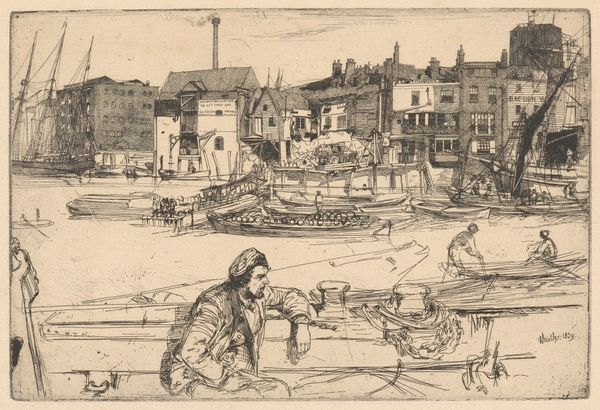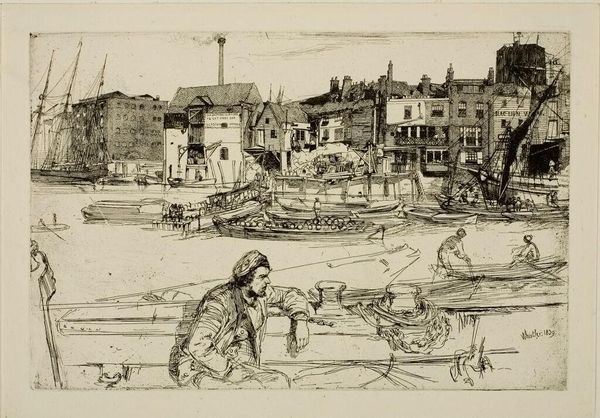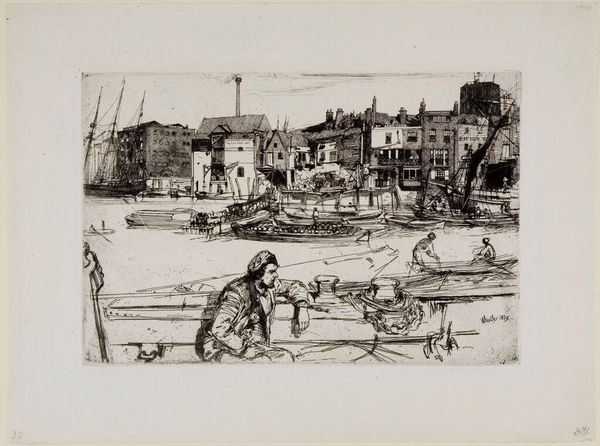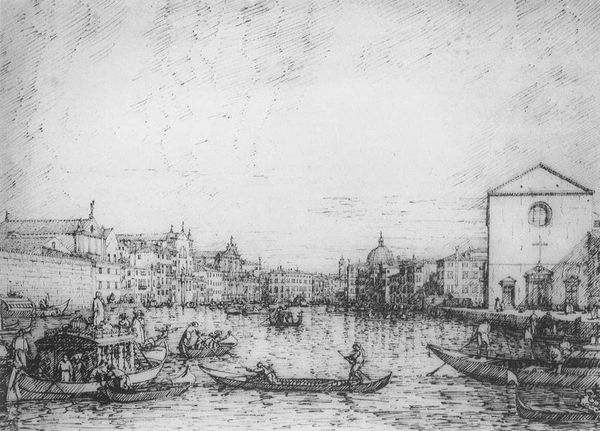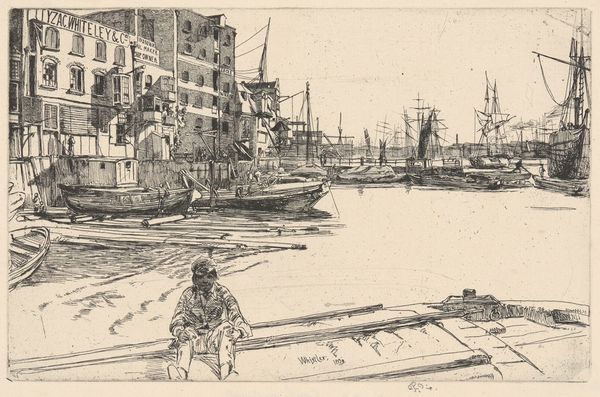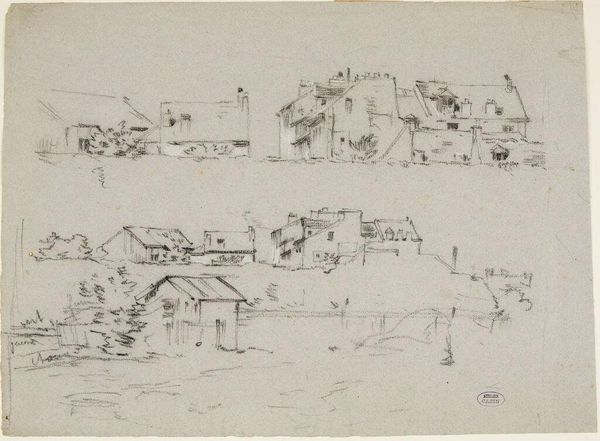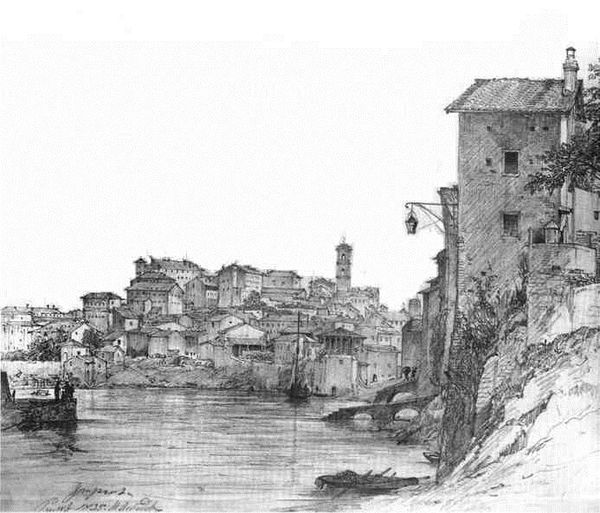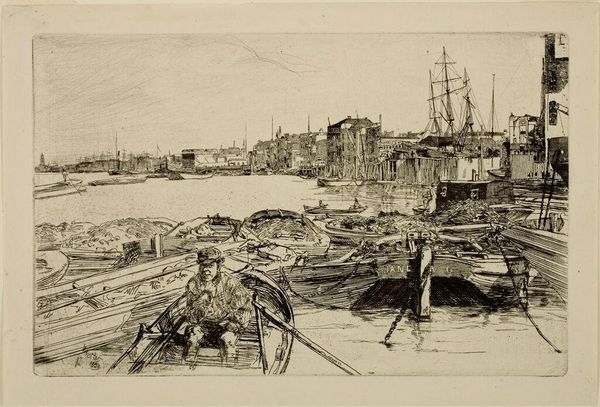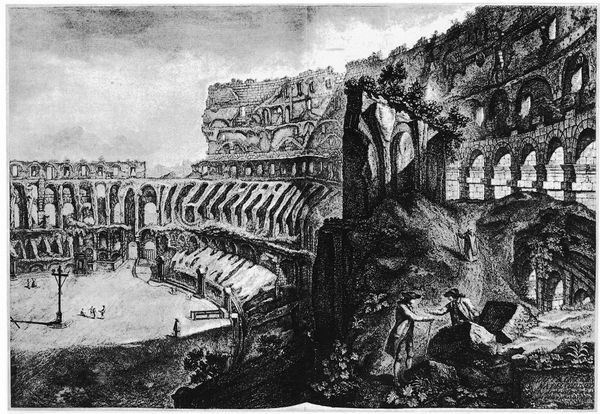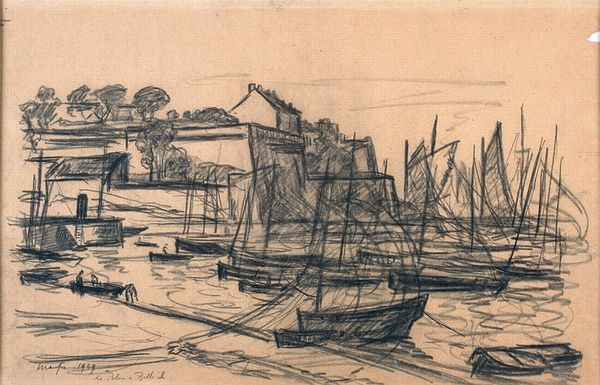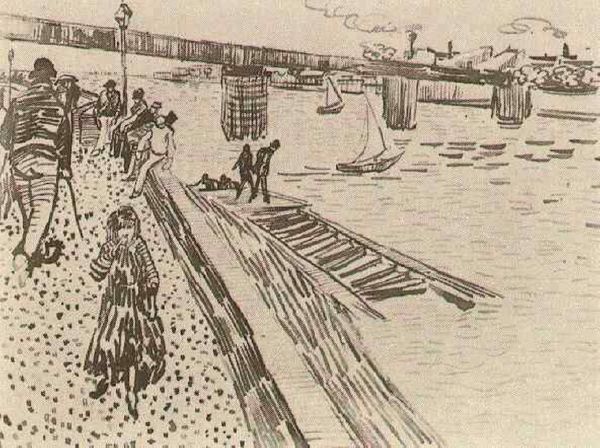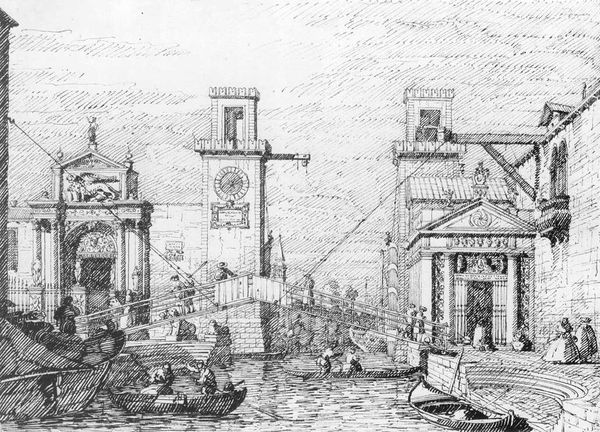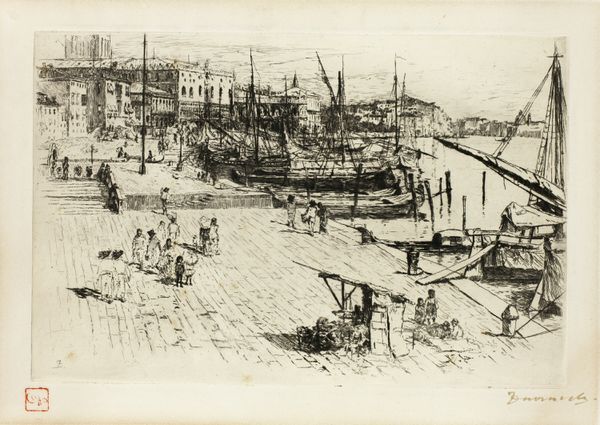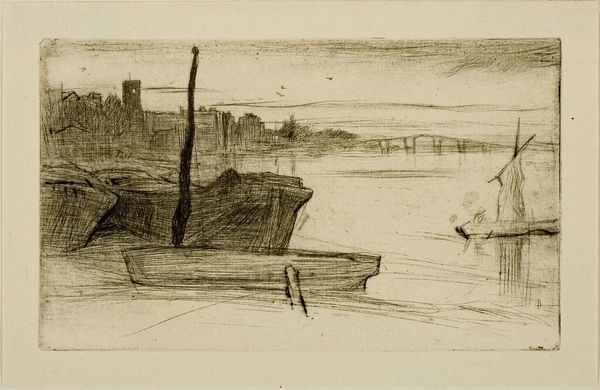
Dimensions: 22.6 x 15.2 cm
Copyright: Public domain
James McNeill Whistler made this etching, Black Lion Wharf, using a metal plate, acid, and ink. Unlike painting, etching is an indirect process. The artist first coats a metal plate with a waxy ground, then draws an image, exposing the metal. Next, the plate is submerged in acid, which bites into the exposed lines. The plate is then inked and wiped, leaving ink only in the etched lines. When pressed onto paper, the image transfers. Look closely, and you can see the embossed edges of the plate. Whistler’s etching exemplifies the character of industrial London. The intricate network of lines captures the atmosphere of the Thames, its busy workers, and the architecture along the river. This contrasts sharply with the hard labor of dockworkers and the commercial activity of the wharf, hinting at the labor and trade behind the city's expansion. The stark medium of etching mirrors the stark realities of urban life during this period. It is important to consider how materials, making, and context are essential to understanding the full meaning of an artwork.
Comments
No comments
Be the first to comment and join the conversation on the ultimate creative platform.
